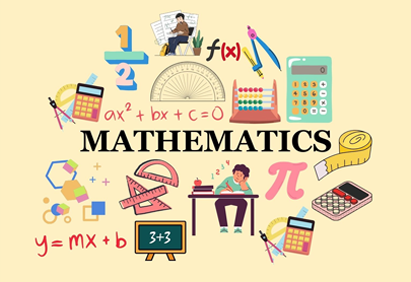COURSE OBJECTIVES
Prepare individuals to teach Mathematics in middle and secondary schools.
Unit-I: AIMS AND OBJECTIVES OF TEACHING MATHEMATICS
Meaning, Nature, Scope, Need and Significance, Values, Aims and Objectives: Instructional objectives and Behavioral Objectives – Need and Importance of Instructional Objectives. Bloom’s Taxonomy of Instructional Objectives: Cognitive, Affective and Psychomotor Domains, Revised Bloom’s Taxonomy 2001 (Anderson & Krathwohl) Interrelation among the domains – Correlation between subjects.
Unit-II: TEACHING SKILLS
Micro-Teaching: Concept, Definition, Steps, Cycle, Micro-teaching Vs Macro-Teaching. Micro Teaching Skills: Skill of Set Induction, Skill of Explaining, Skill of Blackboard Usage, Skill of Questioning, Probing Skills, Skill of Stimulus Variation, Skill of Reinforcement, Skill of Non-verbal Clues, Skill of Closure. Link Lesson – Model Episode.
Unit-III: APPROACHES OF TEACHING
Approaches of Lesson Planning - Steps - Organizing Teaching: Memory Level (Herbartian Model), Understanding Level (Morrison Teaching Model), Reflective Level (Bigge and Hunt Teaching Model) – Unit Plan – Lesson Plan Writing.
Unit-IV: METHODS OF TEACHING
Teacher Centered Instruction: Lecture Method, Demonstration and Team Teaching. Learner Centered Instruction: Self-Learning – Forms of Self-Learning: Programmed Instruction, Computer Assisted Instruction, Keller Plan, Project Method, Activity Based Learning (ABL), Active Learning Method (ALM), Mind Map, Advanced Active Learning Method (AALM).
Unit-V: INSTRUCTIONAL MEDIA
Classification of Instructional Media – Use of Mass Media in Classroom Instruction. New Emerging Media: Tele-Conferencing, Communication Satellites, Computer Networking, Word Processors, Blended Learning, Flipped Classroom, Artificial Intelligence, Augmented Reality.
CURRICULUM INCLUDES
- Algebra, geometry, calculus, trigonometry.
- Mathematics pedagogy and assessment methods.
- Math lab and practicals.
- Use of ICT in mathematics education.
- Psychology of mathematics learning.

